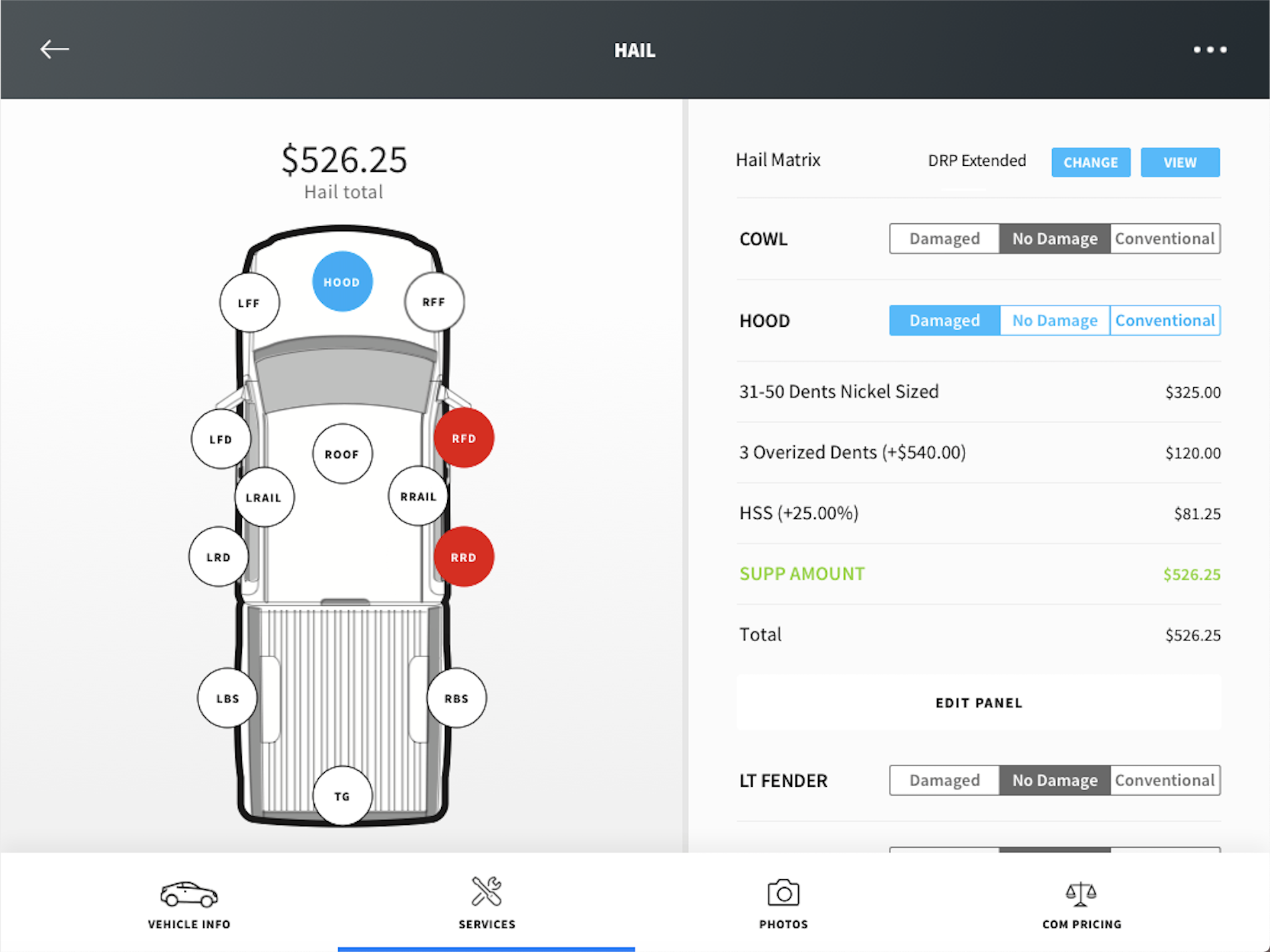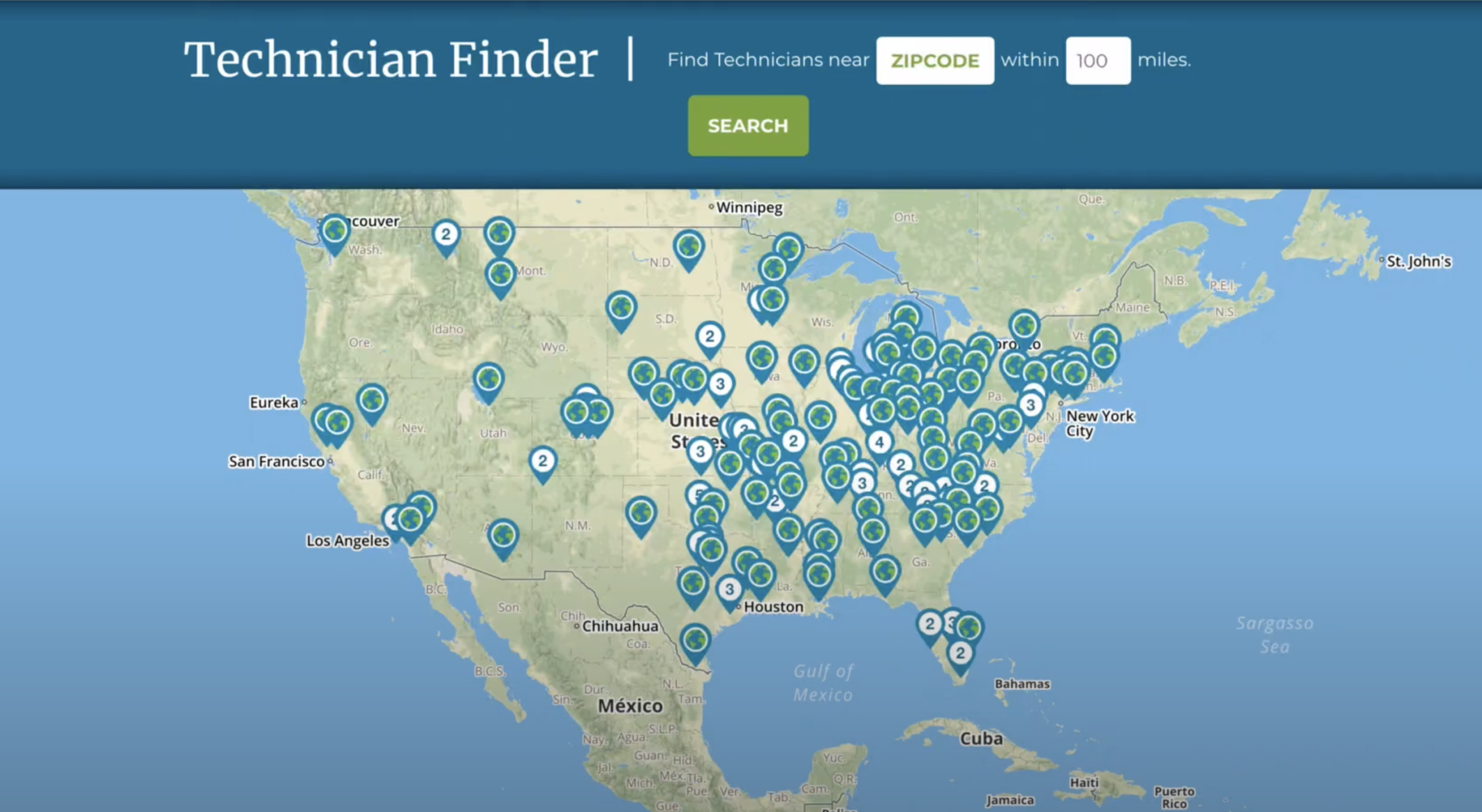As a Paintless Dent Repair (PDR) technician, your craft depends on removing dents and dings without the need for paint work. PDR is intricate work, and it takes a highly-skilled technician with the right tools to carefully repair damage.
Investing in the right paintless dent repair tools is crucial to your success as a professional PDR business. When evaluating tools, you should always ask yourself a few questions. Will this make my job easier? Can I deliver higher quality with this tool? Will this make me more efficient? Can I make more money?
Below we’ve rounded up the ultimate list of professional PDR tools that can help you build and grow a successful business.
PDR Business Technology Tools
Let’s start with the business side of things first. You’re going to want to invest in some technology; think of it as your tool to business success.
Mobile Tech RX
Mobile Tech RX’s PDR app was designed specifically for PDR professionals in hail, retail, and wholesale. This business technology will help you achieve greater efficiency, higher revenues, and make you look more professional. (And you can try it out for free.)

The features of the Mobile PDR app include:
- The ability to create fast digital estimates and professional, branded invoices
- Comparative pricing that gives you access to panel replacement costs, NADA vehicle values, and x-ray photos of panels.
- The option to collect payment through the app
- QuickBooks integration to manage your bookkeeping
- Access to CRM and marketing tools
- The ability to document damage and minimize your risk with photos
- Real-time business reporting for better decision-making
Just like any of your tools, PDR technology will help make your job easier and maximize your profits.
PDR Contractors
PDR Contractors is a powerful online resource that serves as a private networking tool for technicians and a search directory for local dent repair solutions.

The PDR Contractors network includes hundreds of PDR technicians throughout the United States and now Canada. New digital features are constantly being added to the website and mobile app, with input from all user groups. Thousands of dent customers visit PDRcontractors.com each month, and the company leverages data to drive targeted digital marketing where it counts.
You can join their network and start a membership here.
PDR Tools: The Technical Essentials
Here are the essential technical PDR tools every professional technician should have in their kit:
PDR Tools for Visibility
- A PDR Lighting System: Before you can begin any PDR job, you need to ensure perfect visibility. Using a PDR lighting system will allow you to see the dents properly in order to completely remove the damage. You also need specialized lighting for your final inspection, so that you know when your job is done. There are fluorescent or LED lighting options available and you should look for systems that can be adjusted.
- A Dent Reflector Board: A dent reflector board works by casting a shadow onto the damaged area. Using a lined board will help you to see even the slightest of dents or creases in its reflection. A reflector board is one of the PDR tools that helps you to assess the initial damage. You can then use it to monitor the dent’s removal as you work through the job.
Technical Dent Tools
- PDR Hand Tools: As their name would suggest, these short-tipped PDR tools let you get really close to the dent, so you can work it out by hand. They come with sharp and blunt tips and are an essential in your PDR arsenal.
- Hook Tools and PDR Rods: Your hook tools and PDR rods are used to gain access to the dent from inside and push it out. This is the traditional method of PDR and works well as long as you have access to the dent. It’s important to have a selection of these tools at different sizes, so that you can reach more dents. Some rods even have swivel handles for easy use.
- PDR Whale Tails: A whale tail, so called because of its distinctive shape, is also used in the traditional push PDR method. Whale tails come in a variety of widths and sizes, for use depending on the size and location of the damage. They can be used to reach into tight spots that you might not be able to reach otherwise. You’ll want at least five different whale tails in your professional PDR tool kit.
- Wire Tools: PDR wire tools can be easily manipulated and bent to access areas that may be difficult to reach. Wire tools are used in the traditional PDR method and you want a selection so that you’re not caught short. For example, a firm wire with a kink is useful for honeycombed hoods.
- PDR Hammers: You’ll use your PDR hammer for larger dents, since it’s a quick and efficient way of pushing out larger areas. While you may not use it daily, you’ll be grateful for it if you get a job with greater damage.
- A PDR Knock-Down Tool: Your knock-down tool will be one of the most used PDR tools in your kit. It lets you tap down any high spots, which can be created while removing a dent. It’s also a very useful tool for flattening any creases in the panel.
Other Important Tools
- PDR Window Protectors and Wedges: Window protectors ensure you don’t damage the windows when performing PDR. Oftentimes, the best way of accessing a door dent is via the window well. The wedge is a relatively cheap way of making this job easier. To avoid injury and costly accidents with shattered glass, a window protector and wedge are crucial parts of your kit.
PDR Pulling Tools
The pulling method of PDR was first used in the late ‘90s. Instead of pushing the dent from the inside-out, the technician pulls the dent out from the vehicle’s exterior. Specialized plastic tabs are glued to the vehicle’s paint, then a pulling tool is attached to them to pull out the dent. This method can work well if the car still has its original paintwork. But when used incorrectly, you can end up pulling off the paint and causing further damage. A good PDR technician should be able to recognize when to use either method.
For the PDR pull method you’ll need the following in your kit:
- PDR Glue Sticks: There are specialist hot glue sticks designed specifically for PDR professionals. There are many different types available on the market, depending on your needs.
- PDR Glue Tabs: There are a number of different glue tabs available and a lot of it comes down to preference. Many technicians in the industry choose glue tabs with flat surfaces for easier use. You can also get glue tabs with smaller head sizes so that you can perform PDR on smaller areas.
- Slide Hammer, Mini Lifter, or T-Bar: You will use either a slide hammer, mini lifter, or T-bar for PDR pressure pulls, depending on the dent.
Upgrade your PDR business with an easy-to-use estimating tool.
Try the #1 business app for PDR today!
PDR Tool Kits
Investing in a PDR tool kit can be a good way of ensuring you have everything you need. You can also save money by benefitting from a package deal. This can be especially beneficial for those just starting out in the PDR industry.
There’s a huge selection of PDR tools and kits available on the market, so do your research first. You’ll find kits for $25, but obviously these are not designed for professional PDR. To buy a professional PDR kit, you should expect to pay $600+, but it’s probably worth budgeting a few thousand.
The more expensive kits will have a greater selection of tools, giving you the ability to perform more complex jobs. You can also expect higher-quality PDR tools made from stainless steel, which is corrosive-resistant and will last longer.
Remember, you don’t have to buy your entire PDR tool kit in one go. You can buy certain components, such as your hand tools, as smaller sets and then build your kit from there.
It’s also worth investing in PDR tools with warranties, so that you’re protected if they’re not the quality you expected.
Personal Protective Equipment (PPE)
As with any type of work on a vehicle, it’s recommended that you use certain personal protective equipment (PPE). There are gloves designed specifically for PDR, which protect your hands from injury, pressure, and vibrations, without hindering your work. You might also choose to wear protective goggles. And you should always have a first aid kit on hand.
Have questions about products or technology? Feel free to contact us and we’d be happy to chat with you.
Mobile Tech RX is the country’s number one business management tool for auto detailers. To make more money and grow your PDR business, try it now for free.
